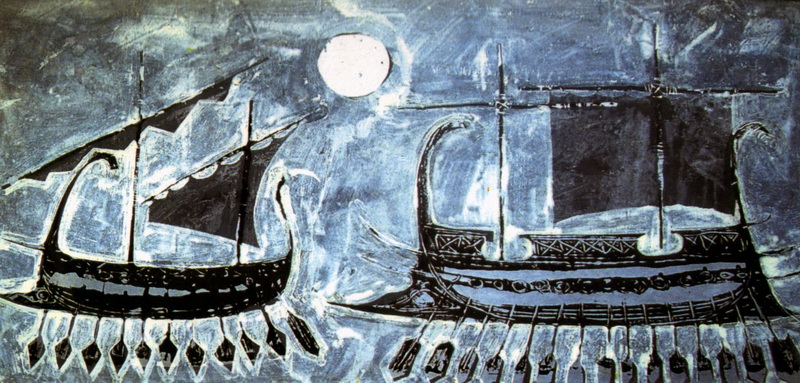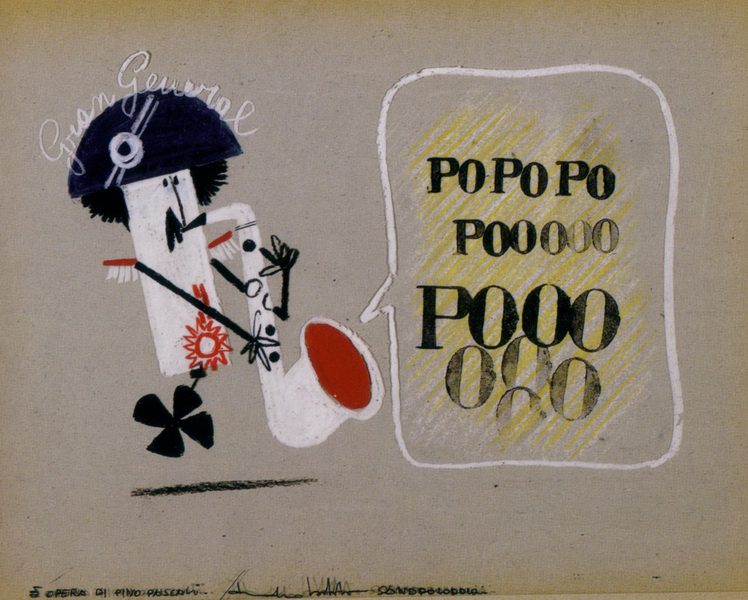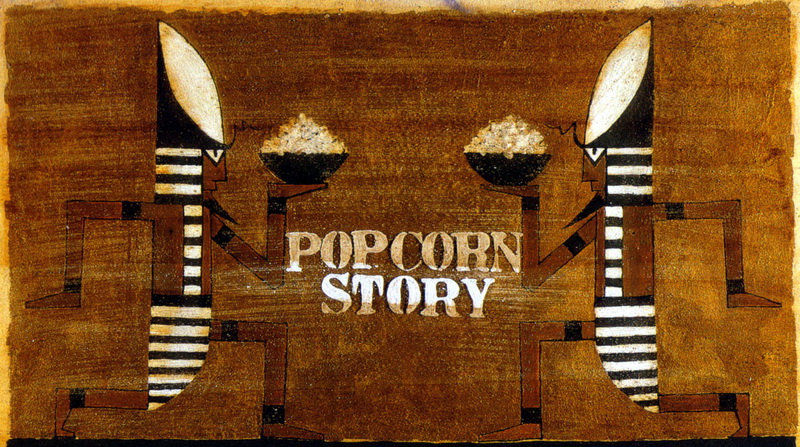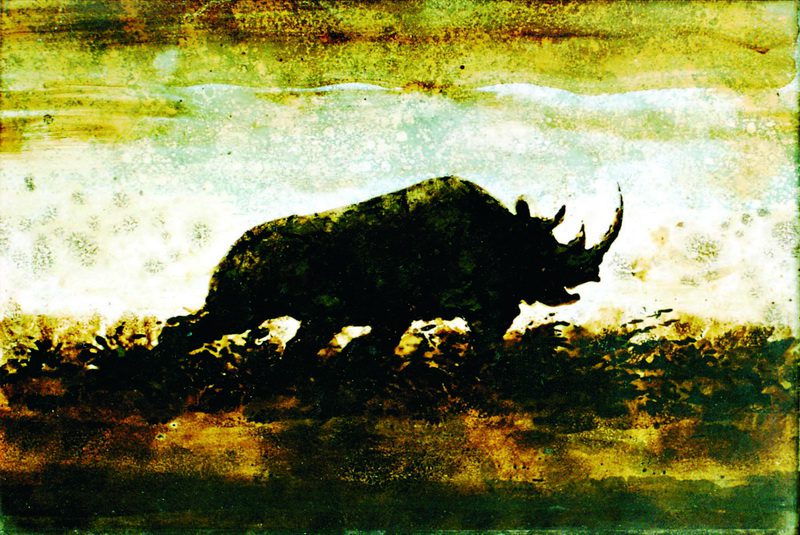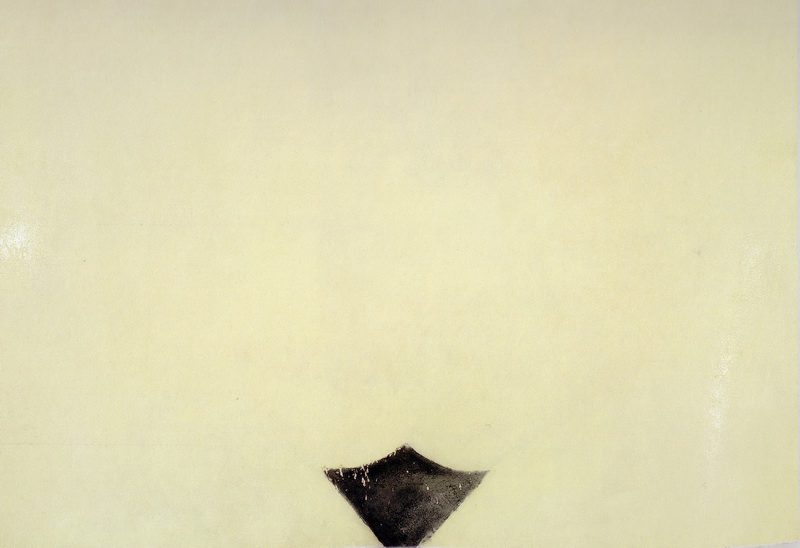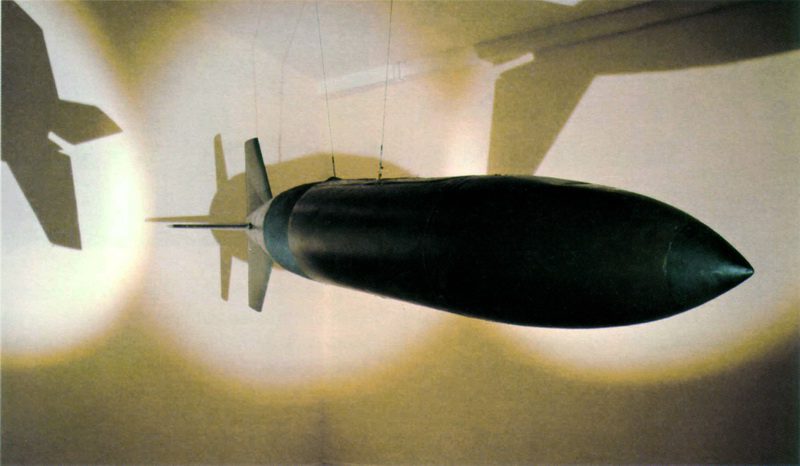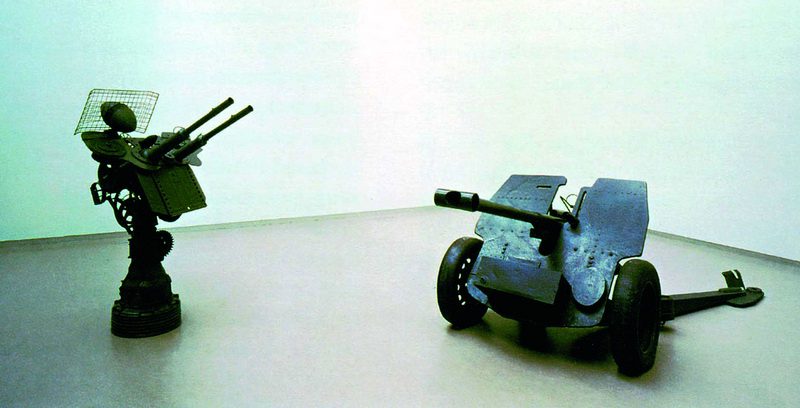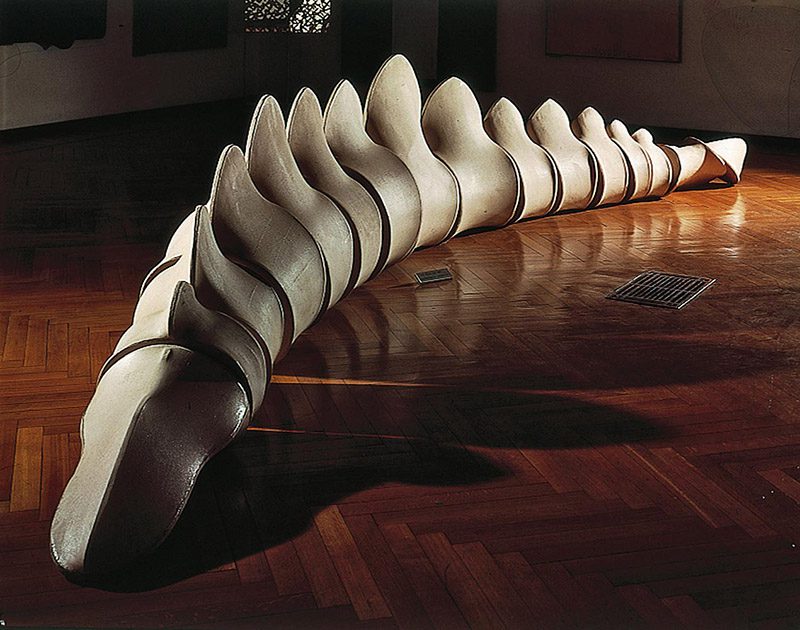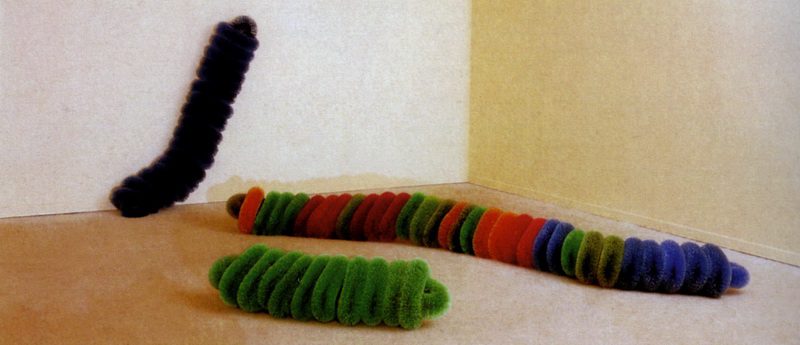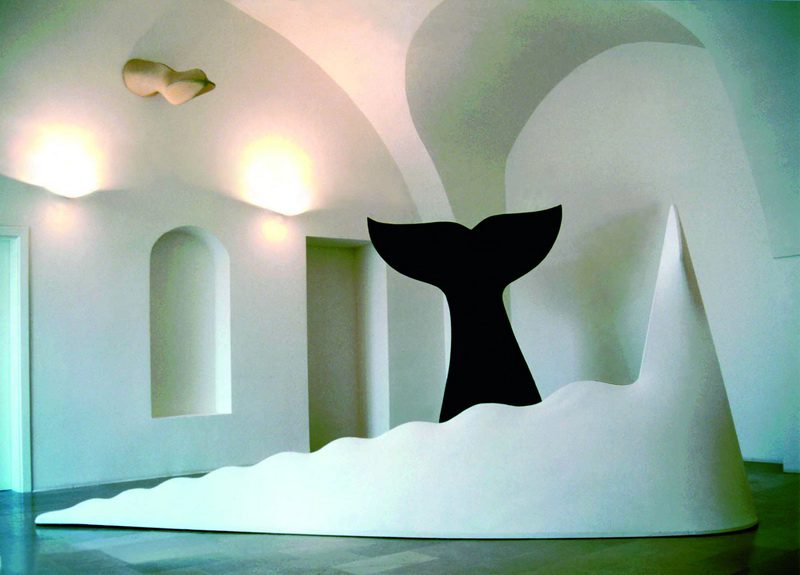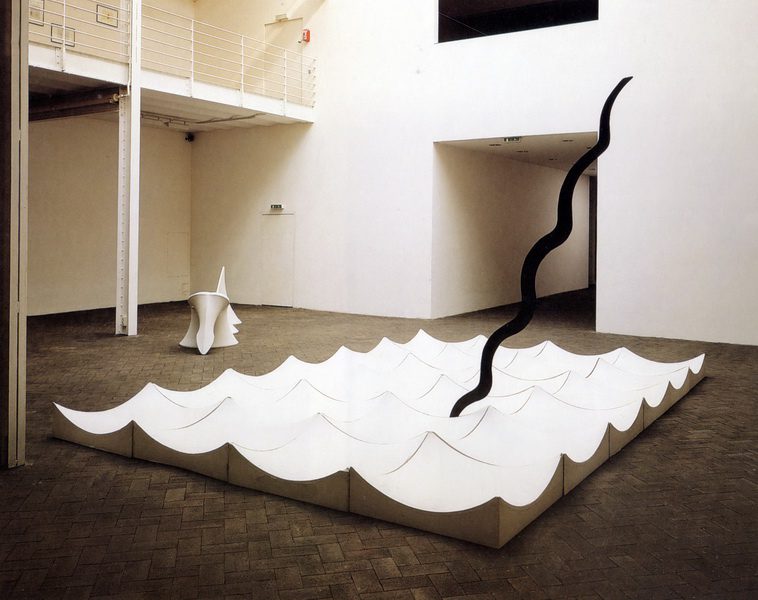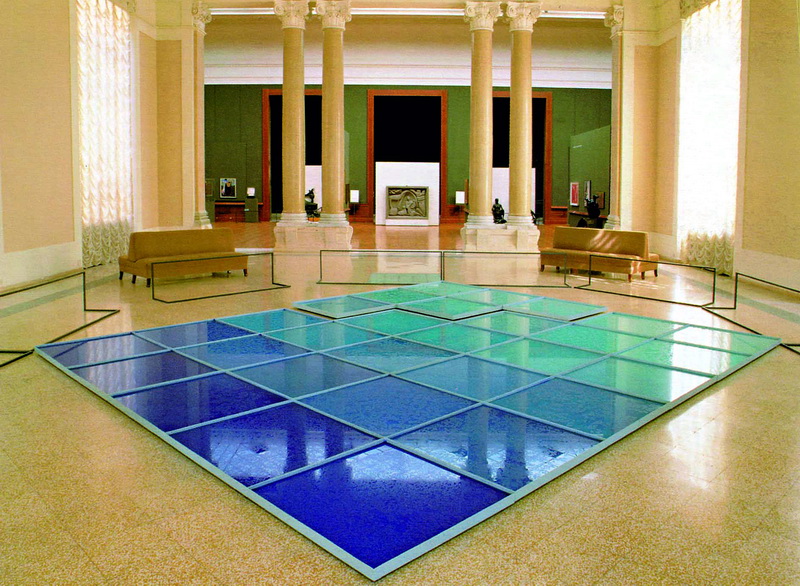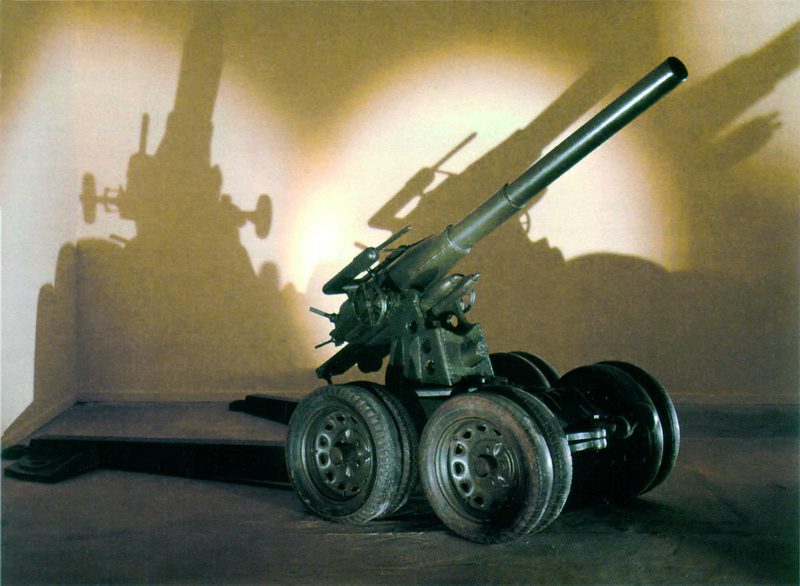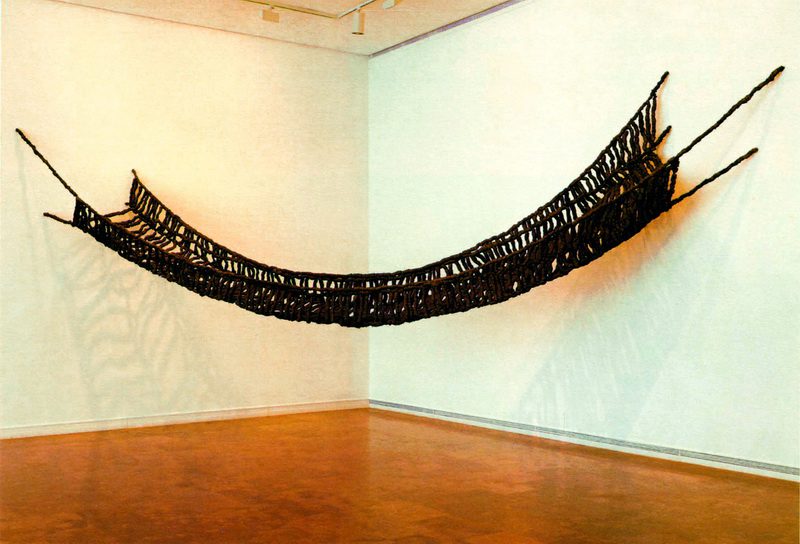TRACES: Pino Pascali
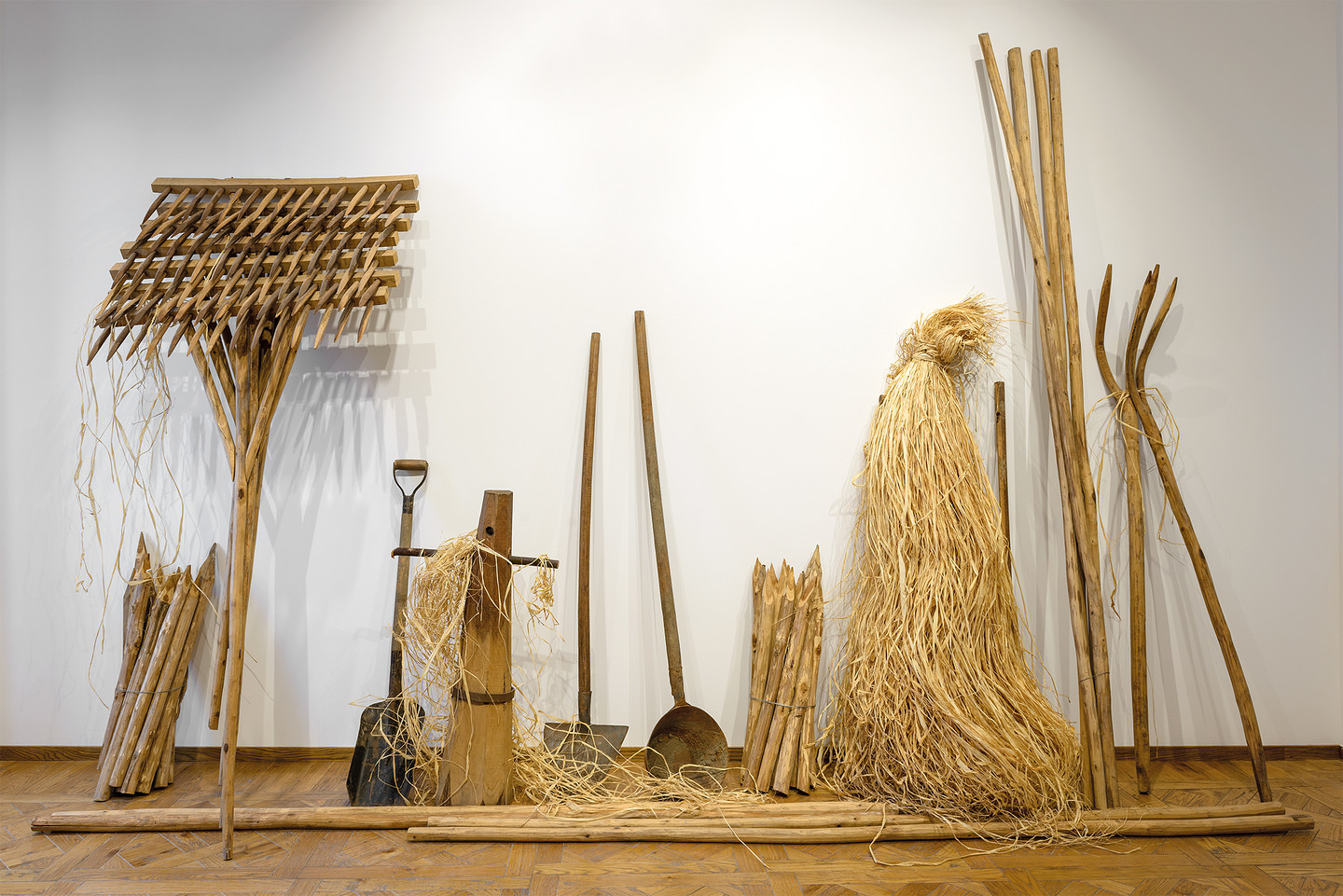 Today is the occasion to bear in mind the Italian artist, sculptor and performer Pino Pascali (19/10/1935-11/9/1968). He was one of the most important Italian artists of the ‘60s and took part in the first Arte Povera exhibitions, but he was killed in a motorcycle crash in 1968. The artworks that he produced in the four short years of his mature career seem so different that they could be the work of separate artists. This column is a tribute to artists, living or dead, who have left their mark in Contemporary Art. Through documents or interviews, starting with: moments and memories, we reveal out from the past-unknown sides of big personalities, who left their indelible traces in time and history…
Today is the occasion to bear in mind the Italian artist, sculptor and performer Pino Pascali (19/10/1935-11/9/1968). He was one of the most important Italian artists of the ‘60s and took part in the first Arte Povera exhibitions, but he was killed in a motorcycle crash in 1968. The artworks that he produced in the four short years of his mature career seem so different that they could be the work of separate artists. This column is a tribute to artists, living or dead, who have left their mark in Contemporary Art. Through documents or interviews, starting with: moments and memories, we reveal out from the past-unknown sides of big personalities, who left their indelible traces in time and history…
By Efi Michalarou
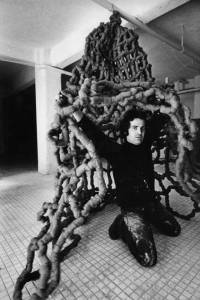 Pino Pascali was born in Bari on 19/10/35, his father a police officer was transferred with his family to Tirana in Albania between1940-41, the war, seen from close was one of the strongest impressions of his childhood. In 1955 he left his science-oriented school in Bari and went to Naples, where he studied in a secondary school specialized in arts, in 1956 he moved to Rome to learn scene painting and set design at the Accademia di Belle Arti. During his studies at the Accademia he began to frequent the artists of the Piazza del Popolo group and took part in a number of collective exhibitions for young artists. He was working as an assistan scenic designer in various RAI productions as well as collaborating with the: Studio Saraceni, Lodolofilm and Incom, where he experimented with the most varied materials and techniques. At this time he was inimate with Plinio De Mariis, the owner of the Galleria Tartaruga, who introduced him in the circle of artists. In 5/1/65 he exhibited at the Galleria Ferrari in Verona the “Grande come un cucciolo”, a sort of animal vacuum cleaner, now destroyed. In 1966, Pascali had a solo exhibition at the L’Attico Gallery in Rome. It was through this exhibition that he first showed his “fake sculptures”, a series of shaped-canvases that first appear to be solid sculptures but are actually paintings that present abstract forms suggesting animals, plants and landscapes. One of Pascali’s “fake sculptures” was “Decapitazione delle giraffe”. Here a structure of wood was created to resemble a skeleton which was then covered with canvas to represent skin. Other sculptures in this series included, “Decapitazione della sculptura” “Mare”. Pascali’s other works involving canvas include “Grande bacino di donna, mons Venus”, and “Labbra rosse”, these works were large flat canvases that became three-dimensional sculptures through the use of wooden structures, paint, and other materials, though they were still able to be hung on the wall. Many of these sculptures were references to popular culture of the time. Soon before, Pascali had created his “Armi series”, assembled from found materials and painted olive-green, these sculptures faithfully recreate every detail of the weapon it mimics. However, as the weapon cannot fire or kill, it becomes an innocent, oversized toy. Opposite to the “Armi series” in appearance, Pascali presented organic forms in a dream-like universe that, like the “fake sculptures,” play on the relationship between illusion and reality. Another famous sculpture by Pascali is the “32 m² di mare circa”, this sculpture consists of 30 shallow trays containing dyed blue water. These tiles were placed adjacently of the floor, except for 6 where a zig-zag path was created so that the viewer could walk through this sea that Pascali has created for them. Pino Pascali’s “Ponte”, a nearly 10 meter-long sculpture made of steel wool wrapped over an armature of metal wire, represented a rare early appearance in art of the humble household product. The sculpture is an outstanding example of Arte Povera, the Italian art movement of the late ’60s whose practitioners among them: Pino Pascali, Mario Merz, Alighiero Boetti, and Jannis Kounellis, worked with ordinary, inexpensive materials. These artists substituted hardware-store supplies and even live animals for the marble and bronze that made up centuries of Italian sculpture. On 11/9/68 he died in Rome after a motorbike accident on 30/8/68.
Pino Pascali was born in Bari on 19/10/35, his father a police officer was transferred with his family to Tirana in Albania between1940-41, the war, seen from close was one of the strongest impressions of his childhood. In 1955 he left his science-oriented school in Bari and went to Naples, where he studied in a secondary school specialized in arts, in 1956 he moved to Rome to learn scene painting and set design at the Accademia di Belle Arti. During his studies at the Accademia he began to frequent the artists of the Piazza del Popolo group and took part in a number of collective exhibitions for young artists. He was working as an assistan scenic designer in various RAI productions as well as collaborating with the: Studio Saraceni, Lodolofilm and Incom, where he experimented with the most varied materials and techniques. At this time he was inimate with Plinio De Mariis, the owner of the Galleria Tartaruga, who introduced him in the circle of artists. In 5/1/65 he exhibited at the Galleria Ferrari in Verona the “Grande come un cucciolo”, a sort of animal vacuum cleaner, now destroyed. In 1966, Pascali had a solo exhibition at the L’Attico Gallery in Rome. It was through this exhibition that he first showed his “fake sculptures”, a series of shaped-canvases that first appear to be solid sculptures but are actually paintings that present abstract forms suggesting animals, plants and landscapes. One of Pascali’s “fake sculptures” was “Decapitazione delle giraffe”. Here a structure of wood was created to resemble a skeleton which was then covered with canvas to represent skin. Other sculptures in this series included, “Decapitazione della sculptura” “Mare”. Pascali’s other works involving canvas include “Grande bacino di donna, mons Venus”, and “Labbra rosse”, these works were large flat canvases that became three-dimensional sculptures through the use of wooden structures, paint, and other materials, though they were still able to be hung on the wall. Many of these sculptures were references to popular culture of the time. Soon before, Pascali had created his “Armi series”, assembled from found materials and painted olive-green, these sculptures faithfully recreate every detail of the weapon it mimics. However, as the weapon cannot fire or kill, it becomes an innocent, oversized toy. Opposite to the “Armi series” in appearance, Pascali presented organic forms in a dream-like universe that, like the “fake sculptures,” play on the relationship between illusion and reality. Another famous sculpture by Pascali is the “32 m² di mare circa”, this sculpture consists of 30 shallow trays containing dyed blue water. These tiles were placed adjacently of the floor, except for 6 where a zig-zag path was created so that the viewer could walk through this sea that Pascali has created for them. Pino Pascali’s “Ponte”, a nearly 10 meter-long sculpture made of steel wool wrapped over an armature of metal wire, represented a rare early appearance in art of the humble household product. The sculpture is an outstanding example of Arte Povera, the Italian art movement of the late ’60s whose practitioners among them: Pino Pascali, Mario Merz, Alighiero Boetti, and Jannis Kounellis, worked with ordinary, inexpensive materials. These artists substituted hardware-store supplies and even live animals for the marble and bronze that made up centuries of Italian sculpture. On 11/9/68 he died in Rome after a motorbike accident on 30/8/68.


